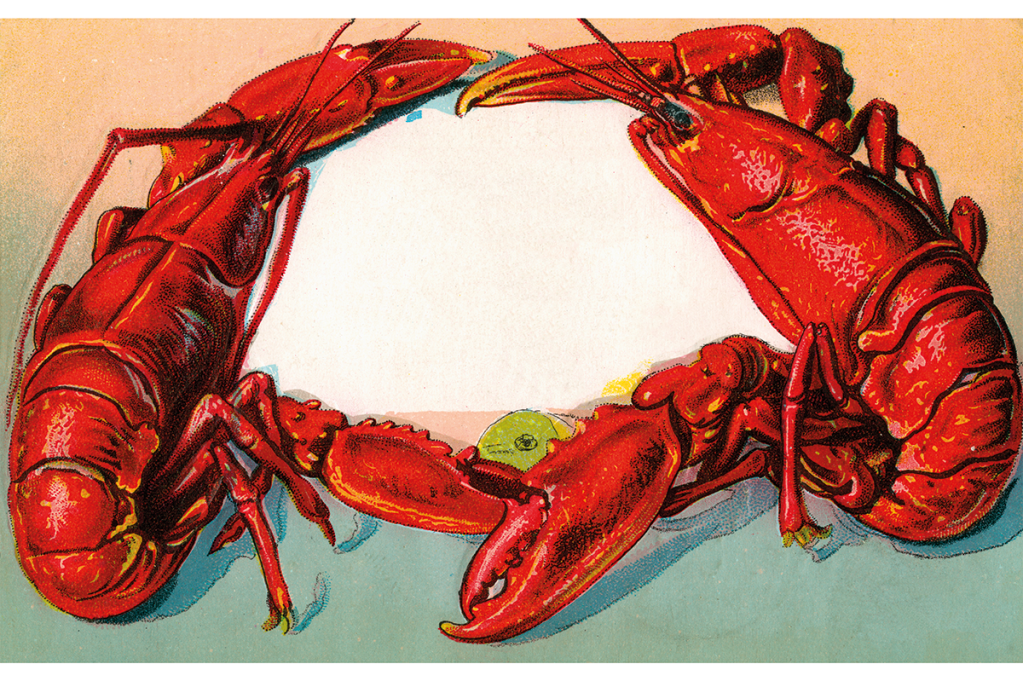Whether or not it is your intention to see and be seen, you cannot avoid the latter when you order a seafood tower. I can say this definitively, having experienced one side more than the other – the mere glimpse of a spire of glistening seafood floating through the brasserie will not only draw the attention of fellow diners, but stir up burning envy in their hearts.
The seafood tower takes the experience of eating an oyster and scales it up tenfold into an exercise in excess, sometimes three or more tiers high.
The oyster has her rightful place on the ice, of course, but we find her alongside her sisters: a bevy of clams, scallops en masse, a bowl of jewel-bright tuna, an army of shrimps cocktail, a collection of mussels and the pièce de résistance, a lovely whole lobster or crab complete with all its tasty garnishes – warm butter, creamy mayonnaise, yellow lemons cut like stars.
The responsibility of cracking open a crab leg is left to a gallant sir or madam
Without compromise or apology, the seafood tower invites you and your dining companions to partake with no guilt, and all others to look on with envy. How many times have I sufficed myself alone at the bar with a bowl of shoestring fries, comforting myself with tales of the joy of simplicity when my true craving lay with copious friends and a bounty of fish?
A friend remarked to me recently that Americans have been craving simple, traditional foods after the rise and sustained dominance of experimental fusion cuisine and the relative austerity of the pandemic years (see the recent popularity of New York institutions such as Bemelmans Bar and the Chelsea Hotel).
She suggested there is a particular interest in the kind of uncomplicated and aesthetically pleasing food and drink that sustains a patio culture: think of afternoons spent lounging with friends in front of a sunlit body of water, sipping some fizzy beverage and chatting about nothing of consequence. The seafood tower is neither uncomplicated nor humble; it is by definition a showstopper with a price point to match. But in many ways, it is the pinnacle of this renewed social ideal; a surfeit of undersea riches strewn about in picture-perfect array – always consumed among friends – and thus a perfect representation of abundance on every level.
The American cioppino, Provençal bouillabaisse and Italian insalata di mare also offer a cornucopia of fish in a dish, but none carry the same punch as the tower. The seafood tower is elevated from its parboiled and braised brethren by pure concentrated decadence. The conceit of the presentation is almost too much – as if every shellfish in the sea came from afar, pried themselves open and offered themselves up for consumption.
It’s as if every shellfish in the sea came from afar, pried themselves open and offered themselves up for consumption
In some cases, accoutrements are offered alongside and the responsibility of cracking open a crab leg is left to a gallant sir or madam. But these functions take on the veneer of perfunctory performance rather than anything real. Most of the labor behind the composition is artfully hidden – the shellfish selected, ideally, hours earlier and the corporal labor of shucking, deveining and claw-cracking performed far from view.
Hands-on shellfish work is left to the setting of more rustic fare like the summer crab boil. And only the summer crab boil can compete with the tower, containing roughly all the main elements and retaining the communal aspect while remaining wholly unpretentious. One imagines dropping three whole platters into a pot and boiling them down, before scattering mussels and langoustines across old newspaper and tearing them apart with a beer in one hand and cracked shells in the other. Much messier and much more fun.
Still, these sorts of dishes are not for everyone. For some, the seafood tower is a gauche, nouveau riche display, closer to gold-leafed foie gras than a clambake. For others, the variety of either the seafood boil or tower is simply too much. “Maybe it’s a little too real,” said a friend, an experienced fisherman. “Sort of feels like, ‘let’s just dump the bucket in the pot and dust it with Old Bay.’ I prefer weird food items to be singled out and left unmolested.”
In Paris recently, on a mission to find an illustrative example for this piece, I suggested to my friends the buzzy seafood spot Clamato (chic green decor, tie-dye-shirt waitstaff, and a line out the door – don’t miss it) and ordered a plateau de fruits de mer without consultation as I knew my companions were raw-food-averse.
I hoped and trusted that the head-turning presentation and the ambiance of the city of love would do enough to assuage their fears and convince them to try – at bare minimum – a little clam.
When the platter came out, crab sawn in half and displayed guts-side out, I knew I would not be successful. But in any case, the wine and bread were very good, I enjoyed more clams than I deserved to have on my own and my friends ate accordingly. C’est la mer qu’on voit danser.
This article was originally published in The Spectator’s July 2025 World edition.


























Leave a Reply